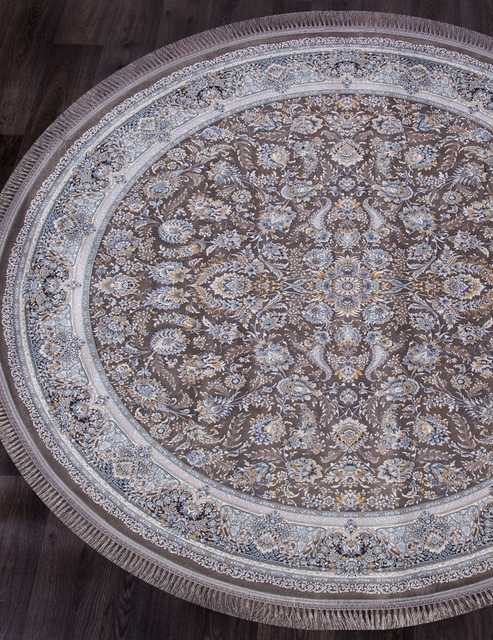A Handy Blueprint to Handmade Rugs
페이지 정보

본문
Man has been creating handmade rugs for thousands of years, utilizing various materials and techniques to bring warmth and beauty to their living spaces. From the ancient civilizations simple woven baskets to the intricately designed, geometric patterns of modern artists, handmade rugs have grown significantly in terms of materials, styles, and craftsmanship.
Natural fibers, primarily linen, have been the backbone of handmade rug production for centuries. Wool, персидские ковры ручной работы in particular, has been a favorite among artisans due to its strength, easy cleaning, and insulating properties. Wool fibers can be obtained from various sources, including sheep. The quality of the wool depends on several factors, including the kind of animal it comes from, the region it is harvested from, and the process of extraction.
Silk, on the other hand, is a more luxurious and expensive option. Obtained from silkworm cocoons, silk is prized for its smooth texture and comfortable look. Silk rugs are often used as accent pieces in high-end homes and offices, adding a touch of sophistication to any room.
In addition to wool and silk, other natural fibers like seagrass have also been used in handmade rug production. These fibers are often obtained from plants and are valued for their natural allure, strength, and affordability.
However, with the advent of artificial fibers, the landscape of handmade rug production has changed significantly. Polyester, nylon, and olefin are just a few examples of synthetic fibers that have become increasingly popular over the years. These fibers offer several perks, including reduced maintenance, ease of cleaning, and affordability.
One of the most significant benefits of substance fibers is their stain resistance. Unlike natural fibers, which can be prone to discoloration, synthetic fibers can withstand spillss and spots with ease. This makes them an ideal option for busy households with pets and children.
Another advantage of artificial fibers is their convenience. They can be easily maintained, dusted, and pressed, making them a low-maintenance option for homeowners.
Synthetic fibers also offer an affordable alternative to natural fibers. They are often cheaper to create and procure, making them accessible to a wider scope of consumers.
Despite the many advantages of synthetic fibers, natural fibers still have their loyal followers. Many homeowners appreciate the unique look of natural fibers, which is unmatched by synthetic fibers.
Ultimately, the choice between natural and synthetic fibers comes down to choices. Homeowners value ease of maintenance may opt for synthetic fibers. Those who emphasize luxury may prefer natural fibers.
In conclusion, handmade rugs offer a custom combination of elegance, warmth, and expertise that can enhance any room in the house. Whether you choose natural or synthetic fibers, there's a handmade rug out there to suit your taste and preference. By understanding the materials and processes involved in handmade rug production, you can make an educated select that fulfills your requirements.
Natural fibers, primarily linen, have been the backbone of handmade rug production for centuries. Wool, персидские ковры ручной работы in particular, has been a favorite among artisans due to its strength, easy cleaning, and insulating properties. Wool fibers can be obtained from various sources, including sheep. The quality of the wool depends on several factors, including the kind of animal it comes from, the region it is harvested from, and the process of extraction.
Silk, on the other hand, is a more luxurious and expensive option. Obtained from silkworm cocoons, silk is prized for its smooth texture and comfortable look. Silk rugs are often used as accent pieces in high-end homes and offices, adding a touch of sophistication to any room.
In addition to wool and silk, other natural fibers like seagrass have also been used in handmade rug production. These fibers are often obtained from plants and are valued for their natural allure, strength, and affordability.
However, with the advent of artificial fibers, the landscape of handmade rug production has changed significantly. Polyester, nylon, and olefin are just a few examples of synthetic fibers that have become increasingly popular over the years. These fibers offer several perks, including reduced maintenance, ease of cleaning, and affordability.
One of the most significant benefits of substance fibers is their stain resistance. Unlike natural fibers, which can be prone to discoloration, synthetic fibers can withstand spillss and spots with ease. This makes them an ideal option for busy households with pets and children.
Another advantage of artificial fibers is their convenience. They can be easily maintained, dusted, and pressed, making them a low-maintenance option for homeowners.
Synthetic fibers also offer an affordable alternative to natural fibers. They are often cheaper to create and procure, making them accessible to a wider scope of consumers.
Despite the many advantages of synthetic fibers, natural fibers still have their loyal followers. Many homeowners appreciate the unique look of natural fibers, which is unmatched by synthetic fibers.
Ultimately, the choice between natural and synthetic fibers comes down to choices. Homeowners value ease of maintenance may opt for synthetic fibers. Those who emphasize luxury may prefer natural fibers.
In conclusion, handmade rugs offer a custom combination of elegance, warmth, and expertise that can enhance any room in the house. Whether you choose natural or synthetic fibers, there's a handmade rug out there to suit your taste and preference. By understanding the materials and processes involved in handmade rug production, you can make an educated select that fulfills your requirements.

- 이전글Crema de alivio con CBD 25.04.15
- 다음글Defining the Future of Office Spaces 25.04.15
댓글목록
등록된 댓글이 없습니다.